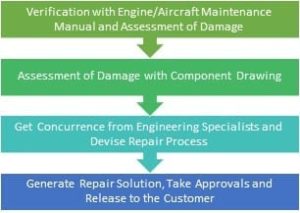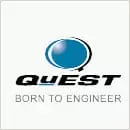
Aircraft fleet size around the world is set to more than double, to almost 48,000 by 2040. The aircraft and engine MRO market is expected to grow at a CAGR of 3.8% during this period, and market demand is likely to reach $109 Billion. MRO companies and OEMs always endeavour to turn around aircraft and aero engines faster to cater to the growing demand, and thus keep their businesses profitable. Lesser the time spent by air assets on the ground, higher the profit margins for airlines and aircraft operators.
As servicing and MRO activities are the major reasons for aircraft downtime, all stakeholders in this business work to keep these to the minimum. However, scheduled servicing and unscheduled repair/maintenance of aircraft and engines are a necessity for regulatory, safety and reliability considerations. Repair of aircraft and aero-engine major components are essential for cost and time optimization. The key factors of repair downtime are logistics downtime and technical downtime. Logistics downtime includes the time needed to place an order, and shipment of the component to and from MRO shop, while technical downtime consists of the repair time, and removal and fitment time of a component at the MRO shop, and is dependent on the nature of the service/defect reported.
Most of the mechanical component defects reported during MRO need thorough engineering analysis to recommend the repair technology/solution that guarantee the desired performance levels, while ensuring safety and reliability. For repair solutions of mechanical components, MRO shops need the right resources to undertake this work – and finding the right resources in-house is a challenge for them many a time.


Repair Solutions Development
The MRO market space consists of OEMs and independent MRO companies. They routinely encounter several types of defects on complex mechanical components of aircraft and engine, which may arise due to wear and tear, foreign object damage and corrosion defects. Each defect encountered during MRO may be unique and need thorough analysis before disposal. The disposal may involve repair or scrap. An effective and efficient repair solution requires:
A general repair resolution process may be as given in the diagram above, and this needs to ensure low TAT (Turnaround Time).
Collaborative Repair Solutions for MRO
MROs may develop repair solutions leveraging an in-house team or seek an engineering services partner. Many OEMs and independent MROs find partnering with engineering services companies to be a beneficial and one-stop solution to undertake repair solutions development work stream. Working with an engineering services partner has proved to be a successful model for them, as this helps them reduce the TAT and cost, while maintaining the desired repair quality. Long-standing relationship with an engineering services partner has been beneficial for them for the development of a pool of engineers and library of defects and repair solutions resulting in quick repair solution development and cost optimization.
Repair Engineering at QuEST Global
QuEST Global has deep domain knowledge in the Aerospace and Aero Engines industries, and has complete understanding of repair technologies for metallic and non-metallic components. Our repair solutions development and disposal process follows an established framework. This process includes study of the defect/wear, component function, aircraft/engine manuals, damage assessment, engineering analysis and development of repair solution. The proposed repair solution gets vetted and approved by the OEM before implementation by MRO shops.
QuEST has been supporting OEMs and MRO companies with repair analysis, repair tool design and their management, and deviation approval from the authorities concerned. Our talented pool of repair and service engineers have experience ranging from 3 to 20+ years and more than 500,000 project hours delivered. We have customer certified first level signatory engineers, who have demonstrated exceptional commitment to delivery and quality, and have delivered more than 6000 repair solutions, which are being used by various MROs for in-service aircraft and engines.
